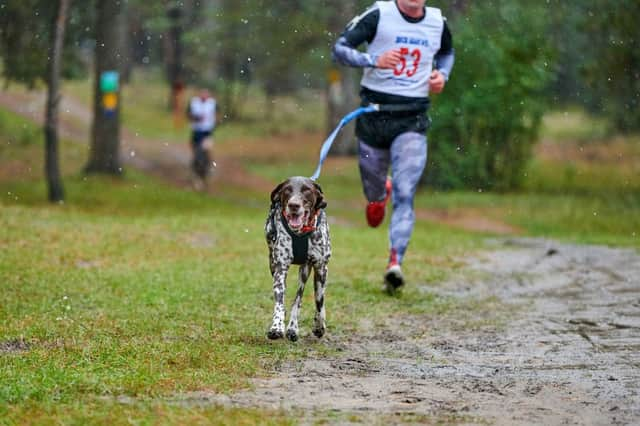Running With Dogs Tips: Here are expert tips from a vet on training for a marathon with your adorable dog


If you've decided this is the year that you're going to run a marathon (or a half marathon or 10K) you'll have a lot of training to look forward to.
Whether you're considering bringing your dog along your training sessions or simply seeking a companion for your jogs, running together can be a rewarding experience for both you and your pet.
Advertisement
Hide AdAdvertisement
Hide AdHowever, it's important to be aware of various considerations and take necessary precautions to ensure your dog's well-being, comfort, and safety during the activity.
To help out Admiral Pet Insurance’s in-house veterinary nurse, Nicki Fox, has put together a guide with some crucial considerations to be aware of before embarking on your marathon training journey with your dog.
Here's what she had to say.
How long can I train with my dog?
The maximum time your dog can be trained or exercised in a day varies greatly depending on various factors. For example, larger, more active breeds like Labradors may have higher endurance levels and can handle longer periods of physical activity. Conversely, smaller breeds like Chihuahuas may tire more quickly and require shorter, gentler exercise sessions. On average, most dogs benefit from 30 minutes to 2 hours of physical exercise per day. However, it's essential to monitor your dog's energy levels and watch for signs of fatigue or overexertion.
It’s also important to consider your dog’s age. Young dogs that are still growing should not be over exercised early on. They may seem full of energy but until the growth plates have formed in the limbs, your dog could end up hurting themselves long term. The bigger the breed, he longer this usually takes. For older dogs, consider shorter, slower walks. Allow them to set the pace and read their body language to identify any difficulty.
What training methods should I use?
When considering training methods, it's important to remember that different breeds have unique traits and needs. Whilst all dogs can be trained using positive, reward-based techniques, the type and intensity of training may vary based on breed and individual characteristics. For example, energetic breeds may require more stimulating activities to keep them engaged, while dogs with health issues such as arthritis should avoid high-impact exercises.
Owners should also be mindful of their dog's behaviour and temperament, especially in relation to their size. Small dogs may exhibit more excitable or nervous behaviour, which could influence their training needs. They tend to be more active-impulsive. It is supposed that unfavourable behaviour in dog’s results from an accumulation of risk factors and the owner's behaviour towards the dog is considered to be one of those risk factors, and a range of owner-dog interactions have been found to be related to dog size. For example, small dogs receive less formal training than large dogs. Dog training has been found to increase obedience and decrease behaviour problems.
How can safety be prioritised during training sessions with my dog?
During training sessions, whether running hands-free or on a leash, it's essential to prioritise safety. In colder temperatures, avoid letting your dog near water to prevent potential accidents or health issues. Additionally, ensure your dog is visible during runs, especially in low-light conditions, by using LED or reflective collars and harnesses. Keep your dog's identification up to date, including microchip details and ID tags, in case of separation during training sessions.
Start slow
Finally, if your dog is new to running, it's crucial to start slowly and gradually increase the intensity and duration of your training sessions. Allow your dog time to adapt to the activity and watch for any signs of discomfort or stress. Incorporating rest stops and allowing your dog to take breaks as needed will help prevent fatigue and injury during training. By considering these factors and tailoring your approach to your dog's individual needs, you can effectively train for a marathon together while prioritising your dog's health and well-being.
Comments
Want to join the conversation? Please or to comment on this article.